A wave-energy harvester is to be built off the north shore of Honolulu (seawater at 20°C) where the average wave speed is V = 15 m/s. The size of the prototype device is characterized by its height H = 6 m. A model is to be tested in the Davidson Laboratory water tank (fresh water at 20°C) where the wave speed is 5 m/s (shallow water wave speed is only a function of depth). (a) express the predicted power generated W as a function of density p, height H, wave speed V, and gravity g. (b) similarity. (c) output. Derive a set of dimensionless parameters using the Pi theorm that will Determine the height of the laboratory model device to ensure dynamic If the model produces 6.85 kW, determine the expected prototype power
A wave-energy harvester is to be built off the north shore of Honolulu (seawater at 20°C) where the average wave speed is V = 15 m/s. The size of the prototype device is characterized by its height H = 6 m. A model is to be tested in the Davidson Laboratory water tank (fresh water at 20°C) where the wave speed is 5 m/s (shallow water wave speed is only a function of depth). (a) express the predicted power generated W as a function of density p, height H, wave speed V, and gravity g. (b) similarity. (c) output. Derive a set of dimensionless parameters using the Pi theorm that will Determine the height of the laboratory model device to ensure dynamic If the model produces 6.85 kW, determine the expected prototype power
Elements Of Electromagnetics
7th Edition
ISBN:9780190698614
Author:Sadiku, Matthew N. O.
Publisher:Sadiku, Matthew N. O.
ChapterMA: Math Assessment
Section: Chapter Questions
Problem 1.1MA
Related questions
Question

Transcribed Image Text:A wave-energy harvester is to be built off the north shore of Honolulu (seawater at
20°C) where the average wave speed is V = 15 m/s. The size of the prototype device
is characterized by its height H
Laboratory water tank (fresh water at 20°C) where the wave speed is 5 m/s (shallow
water wave speed is only a function of depth).
6 m. A model is to be tested in the Davidson
(a)
express the predicted power generated W as a function of density p, height H, wave
speed V, and gravity g.
(b)
similarity.
(c)
output.
Derive a set of dimensionless parameters using the Pi theorm that will
Determine the height of the laboratory model device to ensure dynamic
If the model produces 6.85 kW, determine the expected prototype power
Expert Solution
Step 1
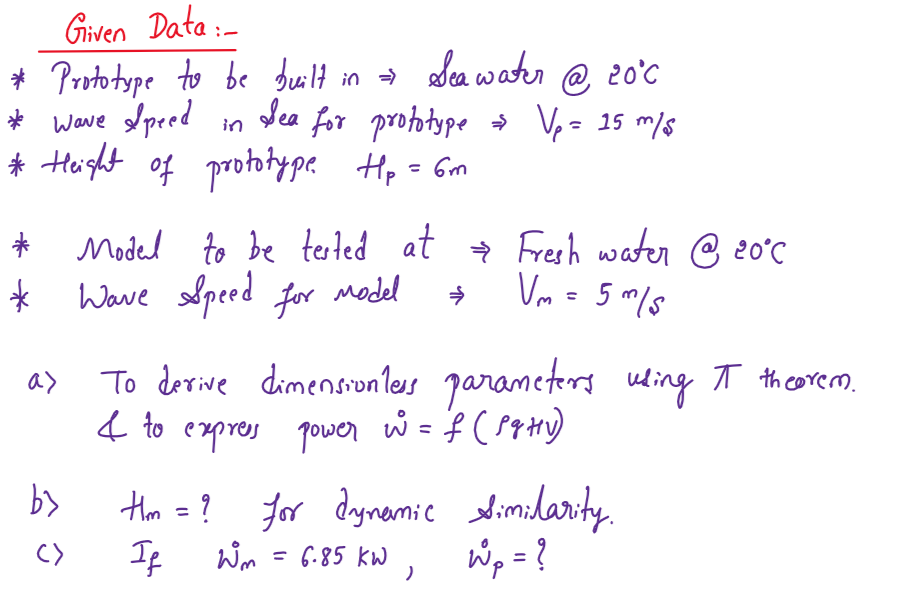
Step 2
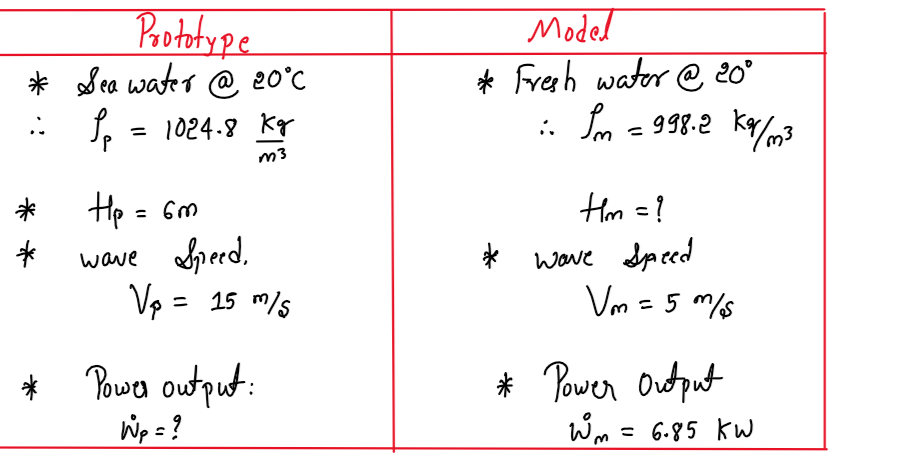

Step 3

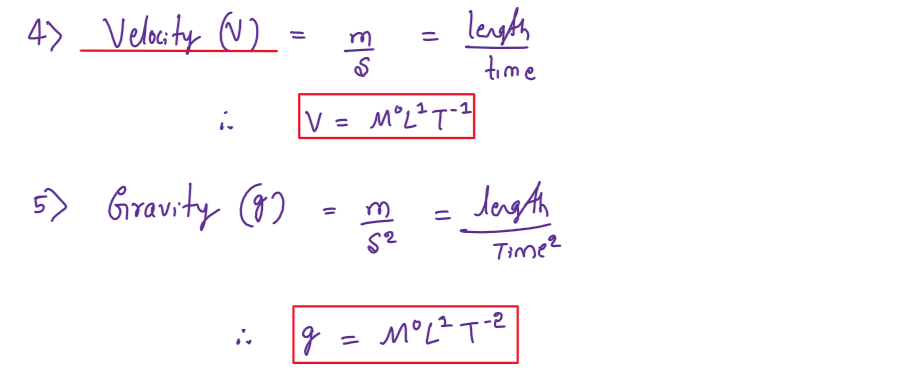
Step 4
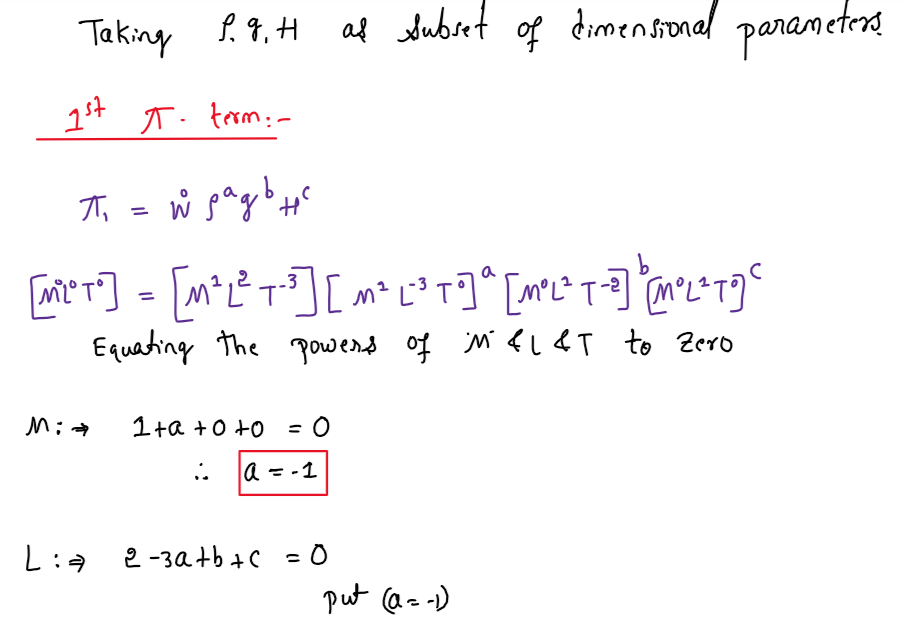


Step 5
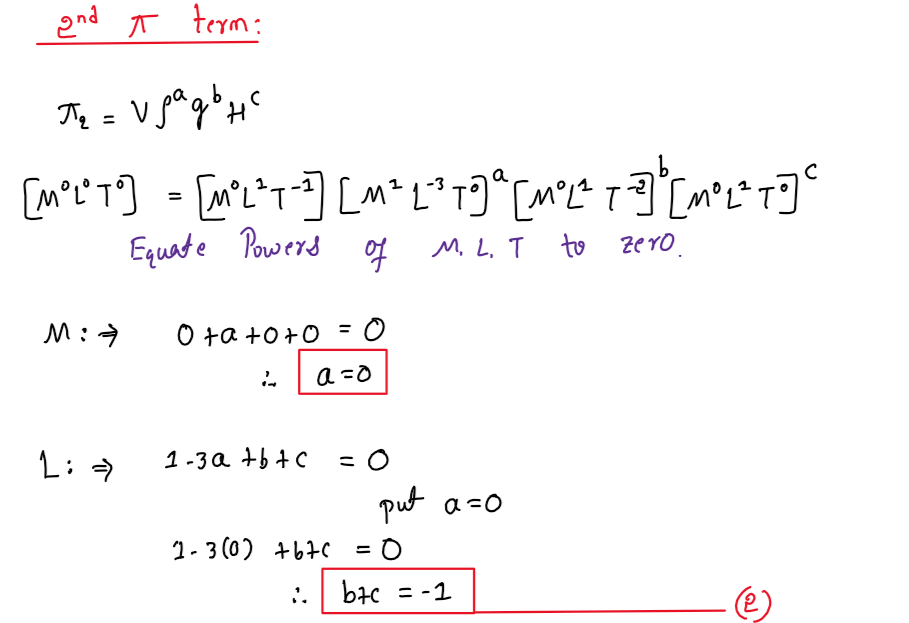
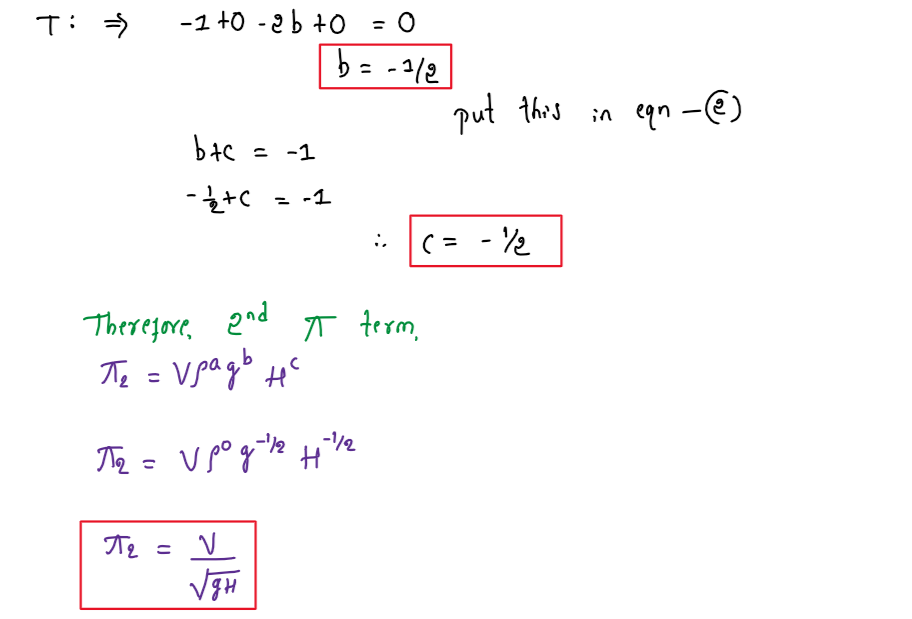
Step by step
Solved in 9 steps with 14 images

Knowledge Booster
Learn more about
Need a deep-dive on the concept behind this application? Look no further. Learn more about this topic, mechanical-engineering and related others by exploring similar questions and additional content below.Recommended textbooks for you

Elements Of Electromagnetics
Mechanical Engineering
ISBN:
9780190698614
Author:
Sadiku, Matthew N. O.
Publisher:
Oxford University Press

Mechanics of Materials (10th Edition)
Mechanical Engineering
ISBN:
9780134319650
Author:
Russell C. Hibbeler
Publisher:
PEARSON

Thermodynamics: An Engineering Approach
Mechanical Engineering
ISBN:
9781259822674
Author:
Yunus A. Cengel Dr., Michael A. Boles
Publisher:
McGraw-Hill Education

Elements Of Electromagnetics
Mechanical Engineering
ISBN:
9780190698614
Author:
Sadiku, Matthew N. O.
Publisher:
Oxford University Press

Mechanics of Materials (10th Edition)
Mechanical Engineering
ISBN:
9780134319650
Author:
Russell C. Hibbeler
Publisher:
PEARSON

Thermodynamics: An Engineering Approach
Mechanical Engineering
ISBN:
9781259822674
Author:
Yunus A. Cengel Dr., Michael A. Boles
Publisher:
McGraw-Hill Education

Control Systems Engineering
Mechanical Engineering
ISBN:
9781118170519
Author:
Norman S. Nise
Publisher:
WILEY

Mechanics of Materials (MindTap Course List)
Mechanical Engineering
ISBN:
9781337093347
Author:
Barry J. Goodno, James M. Gere
Publisher:
Cengage Learning

Engineering Mechanics: Statics
Mechanical Engineering
ISBN:
9781118807330
Author:
James L. Meriam, L. G. Kraige, J. N. Bolton
Publisher:
WILEY